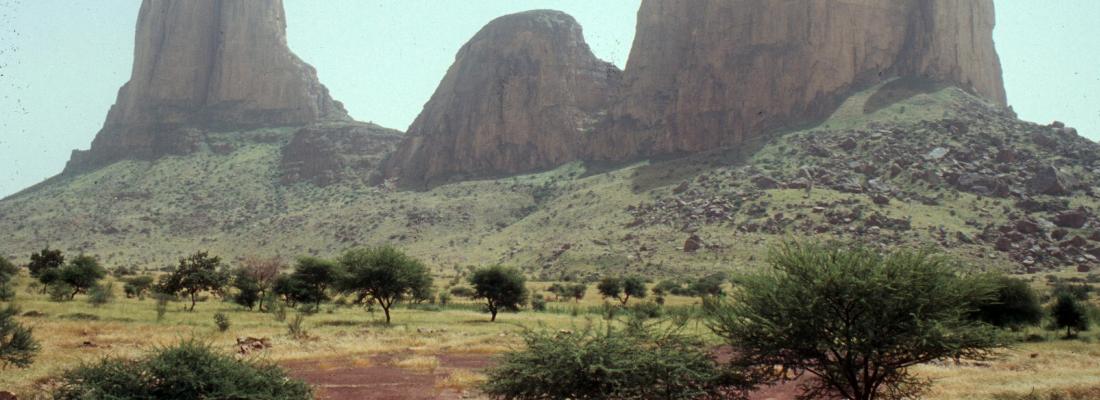Biodiversity Reading time 3 min
A groundbreaking study reveals the carbon stocks of 10 billion trees in the drylands of sub-Saharan Africa
Published on 01 March 2023 (date.last_update 03 March 2023)

Trees in drylands store carbon, provide valuable ecosystem services and support local livelihoods by providing wood, protection against soil erosion and degradation, shade as well as contributing to biodiversity. Knowing their distribution, carbon stocks and density is also essential for ecological protection, climate change mitigation and restoration of dryland ecosystems. But this information is not well known as these trees grow isolated and vary greatly in density and size, and the global forest ecosystem monitoring techniques currently in use do not have sufficient resolution to directly recognise these trees on images. Therefore, while there are studies at a very local level for drylands, at larger scales the information is derived from global maps, which have not been adequately validated for these areas.
An innovative methodology combining high spatial resolution imagery and artificial intelligence
In order to be able to analyse each tree individually, the scientists therefore had to develop a method combining artificial intelligence (AI) associated with high performance computing, high spatial resolution imagery (50 cm) and field data. These field data were used to calibrate the structural parameters of the trees (such as height, crown area and biomass). The researchers analysed more than 300 000 satellite images of sub-Saharan Africa (a semi-arid region north of the equator) and identified more than 9.9 billion trees. They then assigned to each tree the carbon stock associated with each of its components (wood, leaves, roots), as well as its density, cover, size and mass.
According to Pierre Hiernaux, a French researcher working for NASA and consultant for Pastorialisme Conseil, who provided the tree data required for the study, "the high spatial resolution (50 cm) combined with AI and field measurements used in this study is key to improving tree inventories in drylands. The ever-increasing availability of very high-resolution satellite imagery will make it possible to assess carbon pools and their dynamics at the individual tree level on a global scale."
Tree density and carbon stocks in the arid zone are overestimated
Carbon stocks of individual trees range from an average of 63 kg per tree in the arid zone to 98 kg in the sub-humid zone (a zone with an intermediate climate between semi-arid and humid). The total carbon of all the trees identified in these areas of sub-Saharan Africa thus amounts to 0.84 billion tonnes. For comparison, forest stocks in mainland France represent 2.4 billion tonnes. While this figure may seem low, comparisons with numerical simulations of vegetation models have revealed that the density and carbon stocks of isolated trees in drylands are overestimated by most models used in climate simulations.
For Jean-Pierre Wigneron, INRAE researcher at the Soil-Plant-Atmosphere Interactions Joint Research Unit and co-author of the study, “this study is exceptional because it is pioneering a type of approach that will revolutionize the monitoring of trees and forests on a global scale: in the short term, it will be possible to map the world's trees from the centre of the Amazon to our schoolyards. Many fields of application will become much more efficient and accurate, such as tracking carbon stocks, biodiversity, monitoring logging and protection against illegal forest degradation, in near real time.”
The database of these nearly 10 billion trees is now publicly available. For each tree it includes the wood mass, foliage mass, root mass and carbon stock. This information is essential for scientists, decision-makers, agronomists and foresters working on dryland restoration, but also for farmers, who can use these data to estimate and value the carbon stocks of the trees on the land they farm.
In particular, the inclusion of these data in dynamic vegetation models could improve future modelling results, leading to more realistic predictions of the impact of climate change on drylands. The next step will be to add a temporal dimension to the mapping, which may be possible at least at a decadal time step at the tree scale. This will make it easier to consider the impact of droughts, restoration and policies at different scales, down to the level of individual trees.
"This study opens a new dimension in forest monitoring... and many others will follow. This is truly unique in the field of remote sensing! In these future studies, the combination of very high resolution remote sensing and AI will ensure the mapping of forests in many regions of the world (such as Europe and Africa), with unprecedented accuracy and a resolution of 1 to 10 metres," says Philippe Ciais, a CEA researcher at the Laboratory for Sciences of Climate and Environment who took part in this study, which is also the subject of a workshop on the use of remote sensing to better understand and protect forests at the One Forest Summit.
REfErence
Tucker C. et al. (2023). Sub-continental-scale carbon stocks of individual trees in African drylands. Nature, https://doi.org/10.1038/s41586-022-05653-6
